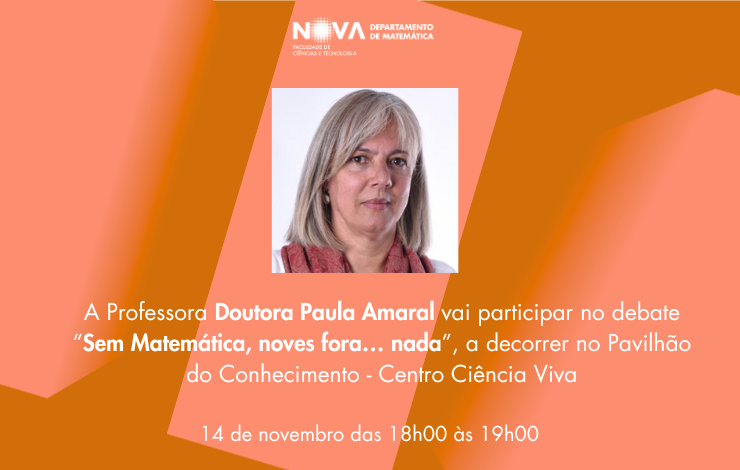Presentations by the students of Pure Mathematics Seminar:
Domingos Siku Samuel
Title: Stable and Unstable Coexistence of Two Species
Abstract: This work’s main objective is to describe in a simple way an algorithm for the study of models that describe the dynamics of two populations of animals that live in the same territorial space. This model is described through a system of two non-linear ordinary differential equations. To study these models Initially, an approach is taken by representing the phase plane associated with the system using the wxmaxima software in order to obtain information associated with the vector field and how the solutions evolve over time. And through the eigenvalues of the linearized matrix we established some conditions about the local stability of the equilibrium points, the Lyapunov functions allowed us to draw conclusions about the global stability of the equilibrium points. For the development of this work, a bibliographical research was carried out.
Enrique Martinez-Abarca Ignoto
Title: Entropy vs Homology
Abstract: Topological entropy is known as a fundamental concept in dynamical systems. In the first part of the seminar, the entropy term, which can be understood as the evolution of distinguibles orbits under a function f over the time, will be developed, as well as some examples with graphical interpretations.
The second part of the presentation will include the "Shub Entropy Conjecture", that relates the entropy with the eigenvalues of the induced homomorphism by f on homology. Finally, it will be stated that axiom A and the zero-dimensional character of the non-wandering set will turn out sufficient conditions for the conjecture to become true.
Mahjan Noori
Title: A bijective proof of the Cauchy identity
Abstract: We study a bijective proof for the Cauchy identity. The proof relies on the well known Robinson-Schensted-Knuth algorithm, which establishes a bijection between generalized permutations and pairs of Young tableaux. It also provides a nice connection between representation theory, symmetric functions and combinatorics.
We will also present another version of the Cauchy identity for symplectic Schur functions, mentioning a bijective proof due to Sundaram, and briefly discussing the similarities and differences with the classical case.
Robert Gluck
Title: Probabilistic Method: a surprisingly effective and elegant technique in proving combinatorial theorems
Abstract: During the presentation we are going to explore the utility of the use of probability in proving various theorems from the broad field of combinatorics. We are going first to introduce what is a Ramsey number and how the Probabilistic Method can help us to obtain its lower bound, then we are going to take a look at sum-free sets and the unexpected use of another probabilistic technique. Finally, we are going to see how the developed tools could be related to a geometry problem
Rúben André Costa Palma
Title: A study on chain graphs and on the k-independence number of trees
Abstract: When we first study graph theory, one of the concepts we come across with is the definition of independence. To compute the independence number of a graph is a known NP-Hard problem, and it's not that easy to make breakthroughs on this area.
The work developed will generalize the idea of k-independence and provide some results concerning trees, and try to make a bridge between k-independence and 'simple' independence.
Henrique Maria de Abreu Lopes e Teixeira Duarte
Title: Collapse, a ProverX package for reducing axioms
Abstract: ProverX is an Automated Theorem Proving tool developed by the LAITEP team, I will present a package that I've been developing on that team called Collapse that takes a theory and attempts to reduce the number of axioms needed to define it. This seminar will cover the algorithm and some of the difficulties in producing it.
Tiago André Ruão Nunes
Title: Conjugacy in Free Inverse Monoids
Abstract: In the first part, I will start by presenting some basic algebraic definitions, alongside with the definition of Free Inverse Monoids and how we can represent its elements.
In the second half, I will focus on explaining the main theorems from Christian Choffrut's article, as well his algorithm to see if two elements are conjugate.
Carolina Strecht Fernandes
Title: Kinetic Models for Chemotaxis
Abstract: A brief introduction to the chemotaxis phenomena, the keller-segel model and kinetic models. Formal study of the chemotaxis model as the macroscopic limit of a kinetic model under certain assumptions on the turning kernel. We finish with some ideas to be applied in the field of epidemic modeling.




